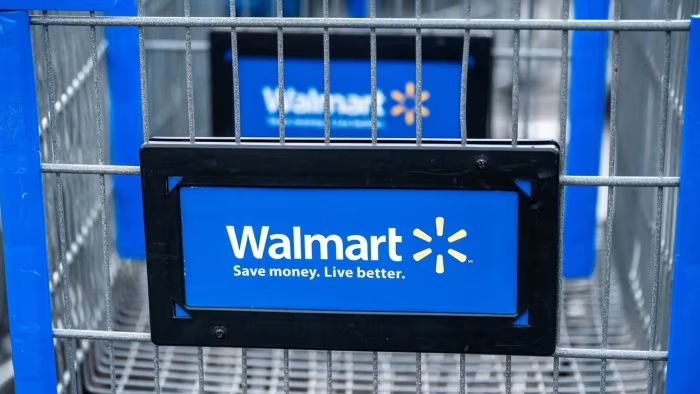Unlock the Editor’s Digest for free
Roula Khalaf, Editor of the FT, selects her favourite stories in this weekly newsletter.
For years, the rivalry between the New York Stock Exchange and Nasdaq revolved around initial public offerings: who could land the next hot tech offering and who could take more start-ups public. With new listings still well below 2021’s highs, a quieter war is now being raged, not over newcomers but companies that are already public.
Walmart’s switch to Nasdaq after 53 years on NYSE, announced on Thursday, is a major coup for its new host. The world’s biggest retailer, with a market capitalisation of more than $850bn, it will be the biggest transfer on record. Walmart joins Shopify, Kimberly-Clark, Thomson Reuters and Fiserv, which together represent more than $317bn in market capitalisation and have all decamped from NYSE this year.
There are some cosmetic benefits to this. Walmart frames the move as part of its “people-led, tech-powered” strategy. Nasdaq is, after all, home to Apple, Alphabet, Nvidia, Tesla and many of their tech peers.
Yet there are real advantages too. The shift will make Walmart eligible for inclusion in the Nasdaq-100 index. That ought to prompt buying by many exchange traded funds and mutual funds by default. Analysts at Jefferies reckon added demand could help to lift its valuation, already a generous 37 times forward earnings, towards the low 40s, provided it can sustain its sales and earnings growth.
Beyond that demand bump, there’s little in it. While some NYSE defectors have thrived — Shopify’s shares are up 52 per cent — Kimberly-Clark and Thomson Reuters are both more than a quarter less valuable than when they moved. Exchange venues can provide liquidity and index eligibility; they cannot make companies run better.

For Nasdaq, as a listed company traded on its own exchange, Walmart’s move confers prestige rather than additional earnings. But it underscores a broader strategy: exchanges are recasting themselves not as mere listing venues but as strategic partners offering data, technology and investor relations support, such as “equity surveillance” services that show issuers who is buying and selling their stock.
Without doubt, companies looking to go public are also swayed by less scientific factors, such as how hard an exchange courts them and what kind of pomp they offer. NYSE debutants get to ring the famous opening bell before a crowd of live traders. Nasdaq counters with prime placement on its giant Times Square billboard. Don’t underestimate the appeal of a party.
On which note, from next year there will be a new kid in town: the Dallas-based Texas Stock Exchange, which has promised lower listing and compliance costs than its big rivals. NYSE has opened a Texan offshoot; Nasdaq plans to follow. If even an aged colossus like Walmart can be persuaded to flip venues, the exchange wars could get heated indeed.
pan.yuk@ft.com
